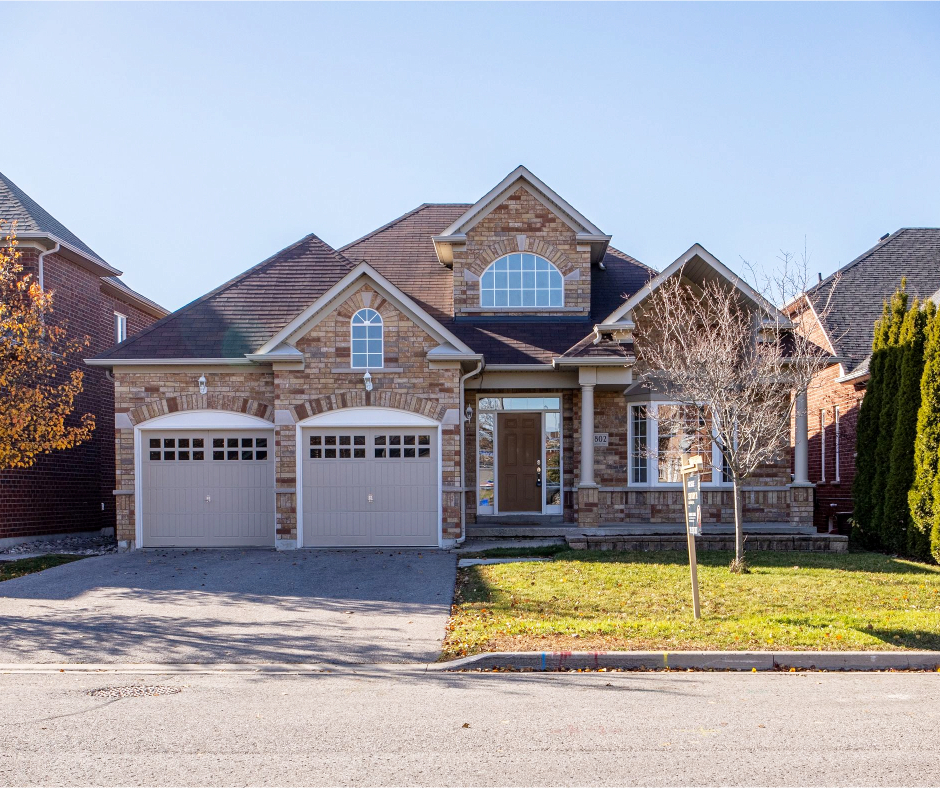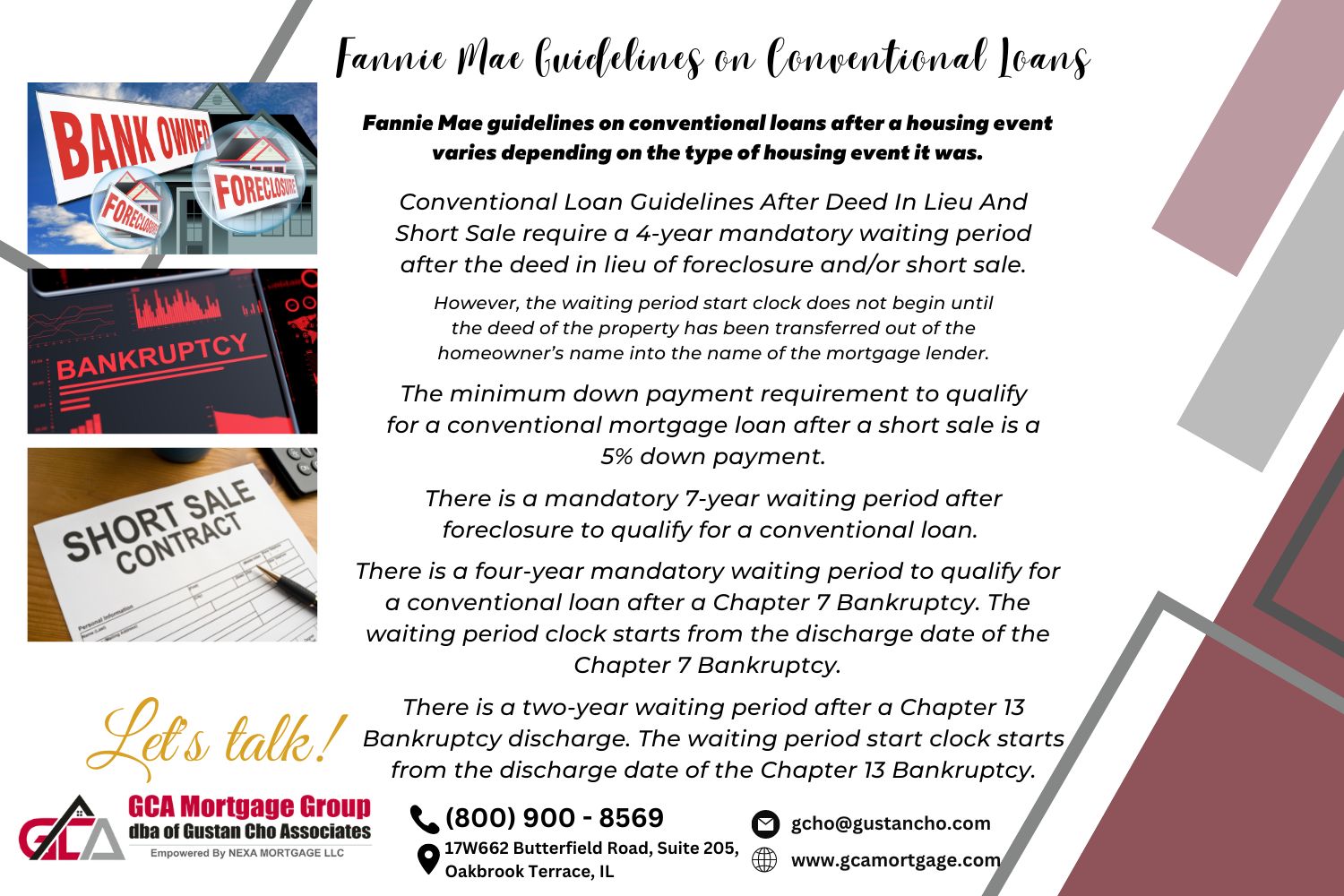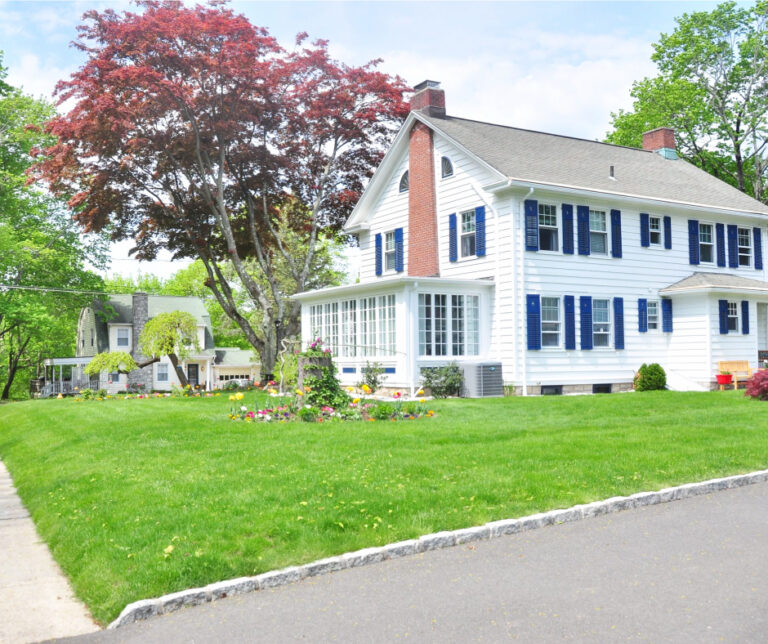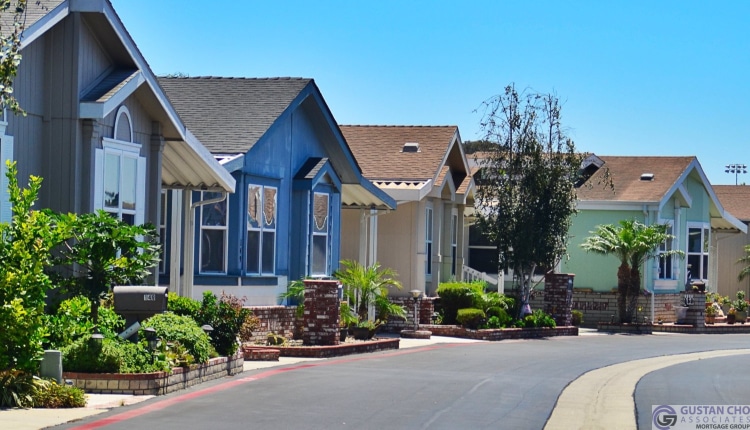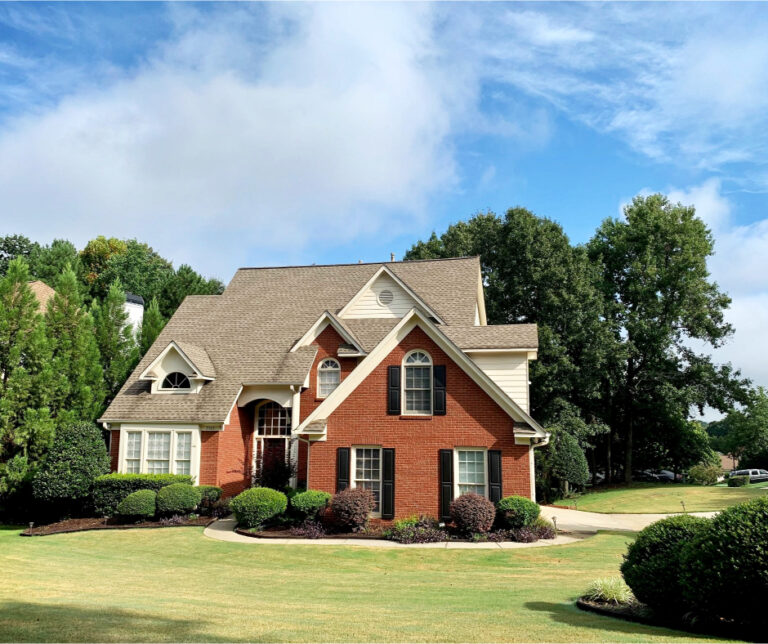Fannie Mae Guidelines on Conventional Loans
This mortgage guide on Fannie Mae guidelines on conventional loans will cover the latest updates on Fannie Mae and Freddie Mac guidelines on changes in conforming loans. It will include loan limit increases in both standard median-priced areas and high-cost counties.
Conventional loans are the mortgage loan of choice because borrowers are not stuck with mortgage insurance for the duration of the term of the loan like FHA loans. Conventional loans are more credit sensitive than FHA loans because they are not backed by any government agency. There is no upfront mortgage insurance premium or a lifetime annual mortgage insurance requirement. Once you have 20% equity in your home, the private mortgage insurance falls off permanently.
We will detail Fannie Mae’s guidelines on conventional loans on derogatory credit items and the eligibility requirement changes. We will also discuss the old Fannie Mae Guidelines on Conventional Loans After Deed In Lieu And Short Sale versus the newly updated guidelines.
UPDATED Fannie Mae Guidelines on Conventional Loans After Deed-In-Lieu and Short Sale
Fannie Mae guidelines on conventional loans after a housing event varies depending on the type of housing event it was. Conventional loan guidelines after deed-in-lieu and short sale require a 4-year mandatory waiting period after the deed in lieu of foreclosure and/or short sale.
The waiting period start date after a deed-in-lieu of foreclosure or short sale is the date the deed of the property has been transferred out of the homeowners name into the lender or new owner or the date of the sheriff’s sale. The waiting period after a deed-in-lieu of foreclosure or short sale is four years from the recorded date.
A deed in lieu of foreclosure is an alternative to foreclosure where the mortgage lender will accept a homeowner to voluntarily turn in his or her keys and deed to the property in lieu of the mortgage lending pursuing foreclosure proceedings.
Fannie Mae Guidelines on Conventional Loans after Foreclosure
Foreclosure rates have never been as high in U.S. history as it has been during the 2008 Great Real Estate Meltdown where hundreds of thousands of homeowners lost their homes through bankruptcy and foreclosure. Thousands of homeowners had mortgage loan balances that were higher than the value of their homes and could not sell their properties.
Fannie Mae guidelines on conventional loans have longer waiting period requirements on standard foreclosure versus a deed-in-lieu of foreclosure or short sale. For a regular standard foreclosure, there is a seven year waiting period after the recorded date of the foreclosure versus four year waiting period after a DIL or short sale.
Homeowners turned to their mortgage lenders for loan modifications and alternatives to foreclosures. Two options mortgage lenders often offered to homeowners who were facing foreclosure were doing a deed in lieu of foreclosure or a short sale. Now, those who had a deed in lieu of foreclosure or short sale can qualify for a conventional loan after meeting the mandatory waiting period after a deed in lieu of foreclosure and/or short sale.
Conventional Loan Waiting Period Guidelines after Deed-In-Lieu and Short Sale
The waiting period after a housing event is different on conventional loans versus government-backed loans. HUD, VA, and USDA have the same waiting period requirements after foreclosure, deed-in-lieu of foreclosure, or short sale.
Conventional loans has a four year waiting period after a deed-in-lieu of foreclosure and short sale and a seven year waiting period after a standard regular foreclosure. FHA, VA, and USDA loans all have the same waiting period requirements on foreclosure, a deed-in-lieu of foreclosure, or short sale.
There is a four-year mandatory waiting period to qualify for a conventional loan after a homeowner had a deed in lieu of foreclosure. However, the waiting period start clock does not begin until the deed of the property has been transferred out of the homeowner’s name into the name of the mortgage lender.
Waiting Period After a Housing Event For Non-QM Loans
Many folks think that the four-year waiting period start period begins when they surrender the keys and the property to the mortgage lender, however, this is not the case. Many times, the deed does not get transferred out of the homeowner’s name into the name of the mortgage lender until years after the homeowner turned in their keys. This definitely hurts the home buyer.
Non-QM Mortgage Loans one day out of foreclosure and bankruptcy has no waiting period requirement. Timely payments and re-established credit a must. The down payment requirement is 20% to 30%.
Another option homebuyers have is non-QM loans. Gustan Cho Associates offers through several wholesale investors non-QM mortgages one day out of foreclosure with no waiting period requirements. A 20% to 30% down payment is normally required. The down payment and mortgage rates depend on how much time has passed from the date of the housing event. The longer it passes, the less risk the lender assess.
When Does The Waiting Period After Foreclosure Start?
I have seen my share of cases where home buyers have called me to inquire about getting a mortgage loan approval after a housing event. Many homebuyers assumed their deed in lieu of foreclosure finalized years ago.
Many people who turned in the keys and surrendered the property still had the deed in their names. In case of scenarios like this, the four-year waiting period did not even start yet. The minimum down payment requirement to qualify for a conventional loan after a deed in lieu of foreclosure is a 5% down payment.
Unfortunately, the waiting period start date does not start until the deed of the property has been transferred out of the homeowners name into the lenders name. Or the deed has changed hand to a new owner by a sale or a sheriff’s sale. Many people thought just because they turned in the keys, that was the date of the start of the waiting period.
Fannie Mae Guidelines on Conventional Loans on Waiting Period After Short Sale
There is a mandatory four-year waiting period to qualify for a conventional loan after a short sale. The waiting period start clock starts from the date of the short sale which is reflected in the HUD’s Settlement Statement. The minimum down payment requirement to qualify for a conventional mortgage loan after a short sale is a 5% down payment.
The waiting period after a short sale is four years after the date of the short sale. The waiting period start date is the date of the closing statement when the property was sold via short sale. The four year time clock starts the day of the closing of the short sale.
The old Fannie Mae Guidelines in qualifying for a conventional loan after a deed in lieu of foreclosure and/or short sale was a two-year waiting period after a deed in lieu and/or short sale with a 20% down payment. Unfortunately, Fannie Mae discontinued the 2-year waiting period after a deed in lieu and/or short sale conventional loan program back in 2014.
Fannie Mae Guidelines After Bankruptcy And Foreclosure on Conventional Loans
Fannie Mae and Freddie Mac are the two largest purchasers of mortgages on the secondary market. The role of Fannie Mae and Freddie Mac is to keep liquidity in the housing market by buying mortgages originated and funded by private lenders.
Private lenders use their warehouse line of credit and sell the loans they closed to the secondary market and pay down their warehouse line of credit. They then repeat the process of making more loans, funding, and selling to Fannie or Freddie and continue making money by originating mortgages. However, Fannie Mae and Freddie Mac will not buy mortgages that do not conform to their standards.
There is a mandatory 7-year waiting period after foreclosure to qualify for a conventional loan. The seven-year waiting period start clock begins on the date of the sheriff’s sale or the date that the deed was transferred out of the homeowners’ name into the name of the mortgage lender and recorded on public records and not the date that the homeowners turned in the keys or vacated the home.
Fannie Mae Guidelines on Conventional Loans After Chapter 7 Bankruptcy
There is a four-year mandatory waiting period to qualify for a conventional loan after a Chapter 7 Bankruptcy. The waiting period clock starts from the discharge date of the Chapter 7 Bankruptcy. No late payments after bankruptcy. Lenders expect borrowers to have rebuilt and re-established credit after bankruptcy.
Fannie Mae Guidelines on Conventional Loans After Chapter 13 Bankruptcy
There is a two-year waiting period after a Chapter 13 Bankruptcy discharge. The waiting period start clock starts from the discharge date of the Chapter 13 Bankruptcy. Mortgage lenders expect borrowers to have rebuilt credit after bankruptcy with multiple credit tradelines. Secured credit cards is the easiest and fastest way to rebuild and re-establish credit after bankruptcy and foreclosure.
Fannie Mae Guidelines on Prior Mortgage Included in Bankruptcy
If you had a mortgage included as part of your bankruptcy, there is a four-year waiting period to qualify for a conventional loan. The waiting period start clock starts from the discharged date of the Chapter 7 Bankruptcy. The mortgage included in the bankruptcy has been discharged through bankruptcy so their is no debt on the house.
It is up to the mortgage servicer to start foreclosure proceedings or offer a deed-in–lieu of foreclosure. The foreclosure can happen at a later date. The four year waiting period start date is the discharge date of the bankruptcy and NOT the finalization of the housing event.
On government loans, the case is not like Fannie Mae and Freddie Mac. If you had a mortgage part of your Chapter 7 Bankruptcy, the waiting period to qualify for an FHA, VA, USDA loans is different than those of qualifying for a conventional loan. The waiting period start date on government-backed loans begins when the housing event has been finalized. The discharge date of the bankruptcy does not matter.
HUD Guidelines on Prior Mortgage Included in Bankruptcy
With FHA, if you had a mortgage, or mortgages, included in your Chapter 7 Bankruptcy, the waiting period time clock does not start until the date of the sheriff’s sale or the date that the foreclosure was transferred out of your name into the name of the lender or some other home buyer. This date will be later than the discharge date of the Chapter 7 Bankruptcy.
If you had a mortgage included in a bankruptcy and the housing event has not been finalized, your best bet is to qualify for a conventional loan. Fannie Mae and Freddie Mac does not care when the housing event whether it is a foreclosure, DIL, or short sale is finalized. They just go off four years from the discharge date of the bankruptcy.
If you have a mortgage part of your Chapter 7 Bankruptcy and four years have passed since the date of your Chapter 7 Bankruptcy discharge date and need to qualify for a conventional loan, please contact me at 262-716-8151 or email us at gcho@gustancho.com. We are available 7 days a week to answer all of your questions, including evenings, weekends, and holidays.

